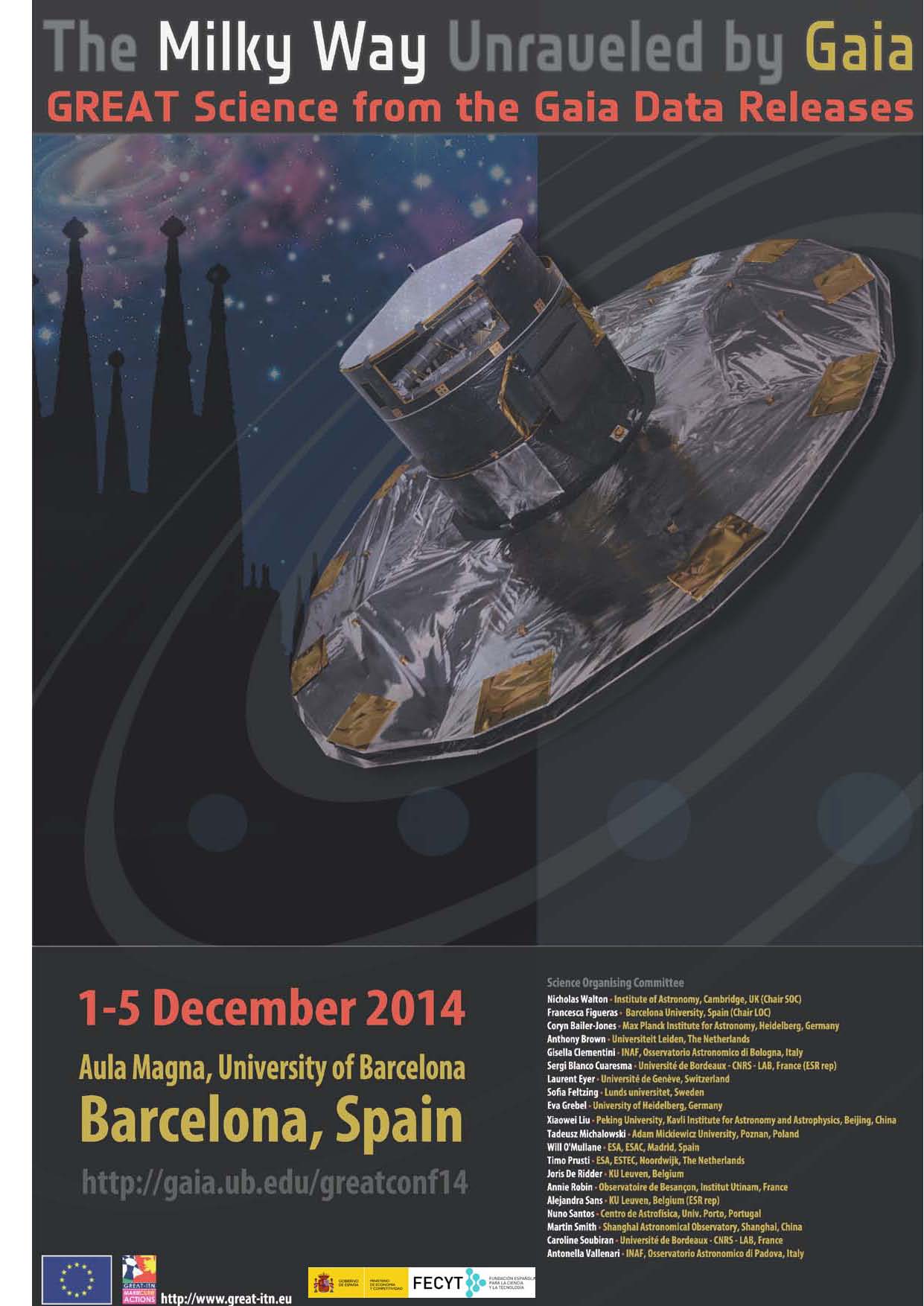Detectability of Ultra Faint Dwarf Galaxies with Gaia
C.Mateu, T. Antoja, L.Aguilar, F. Figueras, A. Brown, A. Aparicio, S. Hidalgo, F. Hernández, E.Antiche (CIDA, Venezuela)
It is clear that Gaia will play a crucial role in the identification and study of substructure in the Galactic Halo. In particular, providing a census of Milky Way satellite galaxies with well understood limits and completeness is of great importance to facilitate the comparison between the observed distribution and predictions from galaxy formation models. In this contribution we will present a technique we have developed for the detection of Ultra-Faint Dwarf Galaxies (UFDGs) in the Galactic Halo, using sky and proper motion information. The method consists in using wavelet transforms to detect peaks in the sky and proper motion planes, and evaluating the probability of these being stochastic fluctuations. Our main goal is to provide a thorough characterization of the detection limits of this technique. For this we haveproduced a library of ~3000 synthetic UFDGs, embedded in the Gaia Universe Model Snapshot background, located at different distances with different luminosity, half-light radius, velocity dispersion and center-of-mass velocity varying in ranges that extend well beyond those spanned by known classical and ultra-faint dShps. We will present here the detection limits obtained as a function of different physical and observable parameters using these synthetic UFDGs as a benchmark.
Topic revision: r1 - 2014-11-28 - SusanaBascon
Ideas, requests, problems regarding TWiki? Send feedback

